Polar Explorers: Virtual Bookshelf
The Virtual Bookshelf provides a list of recommended children’s books that reflect the theme of the issue and offers ideas on how to integrate them across the curriculum.
Since ancient times, people have wondered about what would be found in the northernmost and southernmost parts of our world. Later, many men and women risked their lives hoping to find something there that would make them wealthy or famous. Even today scientists and travelers take risks to learn a little more about the secrets these frozen places hold. One of the last great mysteries on Earth.
ARCTIC EXPLORATION
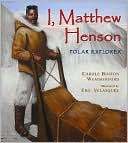 |
I, Matthew Henson: Polar Explorer. Carole Boston Weatherford. 2008. Nonfiction Picture Book. Grades K-5.
Double-page pastel illustrations show the many obstacles-both physical and social-that Matthew Henson faced before realizing his dream of reaching the North Pole. The large pages are perfect for reading and sharing aloud. |
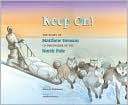 |
Keep On! : The Story of Matthew Henson. Deborah Hopkinson. Nonfiction Picture Book. Grades 1-5.
Matthew Henson was only 13 when he tried out his sea legs. It was his experience as a sailor that led him to join Robert Peary’s expedition-and together they became the first non-native people to reach the North Pole. |
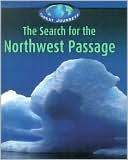 |
The Search for the Northwest Passage. Jill Foran. 2005. Nonfiction. Grades 4-5.
Offering vocabulary words, a timeline and a comprehension quiz, this book presents the historical motivation for seeking the Northwest Passage and the explorers who hoped to make their fortune by finding it. Even today, the Northwest Passage has limited usefulness as a trade route, but with global warming impacting the ice packs, the passage may be open for more months out of the year. |
ANTARCTIC EXPLORATION
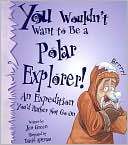 |
You Wouldn’t Want to Be a Polar Explorer! Jen Green. 2000. Nonfiction. Grades 3-5.
Readers take part in Ernest Shackleton’s expedition to cross Antarctica by way of the South Pole. His ship becomes stuck in the ice and the crew is forced to haul their belongings behind them in sleds made of lifeboats. Crew members are lost when ice thaws and cracks in half in the middle of camp. Other treacherous events are detailed, and the reader learns some of the techniques the explorers used to survive. Comic-bookish illustrations make this an enjoyable read. |
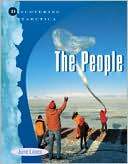 |
Discovering Antarctica: The People. June Loves. 1998. Nonfiction. Grades 3-5.
Surprisingly, Antarctica was a mystery to European explorers and was not officially sighted or mapped until 1820. Students will learn about Captain James Cook’s initial voyages inside the Antarctic Circle, the first explorers to set foot on “land,” and the race to be the first expedition to find the South Pole. Today Antarctica is the site of international, collaborative research, with multiple bases where scientists gather data. Photos and maps show students the locations of historically significant expeditions and how camps have evolved technologically over time. |
POLAR EXPLORATION
 |
Polar Explorers for Kids. Maxine Snowden. 2004. Nonfiction. Grades 2-5.
This book presents polar explorers chronologically and offers hands-on activities in each chapter. |
 |
Women Explorers in Polar Regions. Margo McLoone. 1997. Nonfiction. Grades 3-5.
Beginning by defining what an explorer is and the challenges explorers face, this book introduces readers to five explorers most of us have never heard of. From gold-rush heiress Louise Boyd to travel writers Agnes Cameron and Ida Pfeiffer, to nurse Kate Marsden, to modern-day athlete Helen Thayer, each woman had reasons for traveling to the poles. |
 |
Polar Exploration: Journeys to the Arctic and Antarctic. Martyn Bramwell. 1998. Nonfiction. Grades 3-5.
This DK Publishing book provides an overview of exploration in both polar regions. Students will appreciate the numerous colorful illustrations, diagrams, and quotes from explorers. |
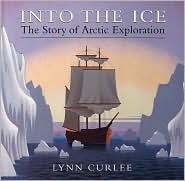 |
Into the Ice. Lynn Curlee. 1998. Nonfiction. Grades 4-5.
From the ancient Greeks and Romans to the Europeans and Americans, the North Pole was a mysterious place to be conquered for its resources and potential for swift trade routes. Unprepared for the harsh environment, many missions failed due to poor diet, disease and lack of resources. Boats became trapped and crushed by the ice packs; some explorers attempted to travel over the ice on skis. Swedish explorer Salomon Andree even tried to travel by balloon. Made easier by the invention of the airplane, exploration turned to the South Pole in the early 1900s. |
 |
Pioneering Frozen Worlds. Sandra Markle. 1996. Nonfiction. Grades 4-5.
So what do scientists do at the poles, anyway? Learn what technology has allowed scientists to explore the poles and what they are studying. The poles are a great place to test robots and vehicles for space exploration. Scientists study polar animals-what they eat and where they go. Scientists are learning about ice and how it melts. Core samples are being taken to study the climate and geological history of our planet. There’s a whole lot going on in the coldest places on earth! |
PENGUINS AND POLAR BEARS
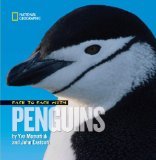 |
Face to Face With Penguins. Yva Momatiuk and John Eastcott. 2009. Nonfiction. Grades 3-5.
Two award-winning photographers traveled to the Antarctic to meet and photograph a variety of different species of penguin. The impact of global warming on penguin colonies is discussed. Readers will learn some fun facts. Did you know penguin poop is often pink? Or that penguins can jump as high as 6 feet to get out of the water? |
 |
The Last Polar Bear. Jean Craighead George. 2009. Fiction Picture Book. Grades K-3.
The ghost of a polar bear leads a Native child and his grandmother to an ice floe where the bear’s cub is stranded. On their journey, they discuss the impact of global warming on the polar bear’s habitat. |
This article was written by Kate Hastings. For more information, see the Contributors page. Email Kimberly Lightle, Principal Investigator, with any questions about the content of this site.
Copyright February 2010 – The Ohio State University. This material is based upon work supported by the National Science Foundation under Grant No. 0733024. Any opinions, findings, and conclusions or recommendations expressed in this material are those of the author(s) and do not necessarily reflect the views of the National Science Foundation. This work is licensed under an Attribution-ShareAlike 3.0 Unported Creative Commons license.













